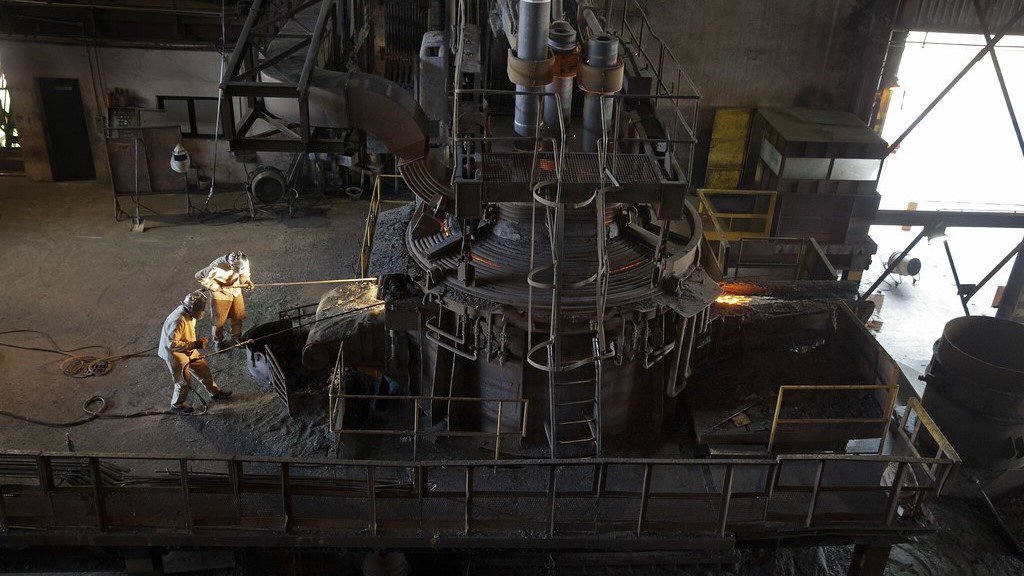Column: Nickel’s electric dreams turn into a pricing nightmare

The global nickel market flipped from deficit to surplus over the course of 2022, according to the International Nickel Study Group (INSG).
Supply of what is a key metallic input for electric vehicle (EV) batteries exceeded demand by 112,000 tonnes last year, the largest surplus since 2014, the INSG calculates.
You wouldn’t know it from looking at the London Metal Exchange (LME), where registered nickel stocks have fallen by almost 20% since the start of January and the three-month price remains elevated at $25,000 per tonne.
However, the London market has become increasingly divorced from what is happening in the physical supply chain over the last year.
“The reality is that the global price discovery mechanism for this critical building block of the energy transition is not functioning well,” according to Huw McKay, VP of Market Analysis & Economics at BHP Group.
It doesn’t help that the LME’s benchmark status is itself in question after the market meltdown last March.
Indonesian nickel boom
The turnaround in market dynamics last year was all about Indonesia, where the government is set on turning the country into a major hub for battery metals.
Indonesia’s mined nickel production expanded by 48% to 1.58 million tonnes in 2022, according to the INSG. The country now accounts for about half of the global output.
The mining boom is feeding a processing boom, with the production of nickel pig iron (NPI) growing by 32%, and the output of intermediate nickel products nearly tripling to 288,000 tonnes in 2022.
Indonesia’s smelters are churning out nickel in a widening array of forms as operators experiment with converting the country’s low-grade ore into a chemistry that can be used by EV battery makers.
Chinese companies are at the heart of this industrial revolution and China’s nickel imports have started reflecting the changes underway.
Imports of Indonesian matte, a form of nickel now being tailored to the battery chain’s requirements, went from zero in 2021 to 168,000 tonnes in 2022.
Shipments of Indonesian intermediate products such as nickel oxide and mixed hydroxide precipitate (MHP) leaped to 460,000 tonnes from just 56,000 tonnes in 2021.
The flow of Indonesian NPI to China continues to mushroom, up another 72% last year at 5.4 million tonnes.
With investment still pouring into Indonesia, including from Western producers and battery makers playing catch-up with Chinese players, the country’s nickel boom shows no signs of ending any time soon.
Class divide
The problem is that none of this Indonesian production is in a form that is deliverable against either the LME or the Shanghai Futures Exchange, which trade Class I refined metal.
The LME price reflects the dynamics of the Class I market, which has been tight for over a year and which remains highly sensitive to Russian news flow.
Nornickel, so far largely unsanctioned, produced 218,970 tonnes of nickel last year, all of it in the form of refined metal.
However, as Indonesian production of Class II nickel rises, the Class I market shrinks. Around 70% of the physical nickel supply chain is now priced at a discount to the LME benchmark.
Discounts for products such as matte and ferronickel have ballooned in recent months as the market digests the Indonesian supply wave.
Indeed, the disconnect with LME pricing has become so pronounced in some parts of the market that players are experimenting with completely different methodologies.
Price reporting agency Fastmarkets notes the return to fixed-price contracts in the Western ferronickel market, the use of an NPI-plus-premium formula in the Chinese market and the emergence of stand-alone MHP pricing.
There is no longer one nickel price but many.
Malfunctioning benchmark
BHP is calling for a “long overdue” overhaul of the LME’s physical delivery rules. The exchange says it is actively looking at ways to capture nickel’s changing dynamics.
However, the LME has struggled in the past to design a Class II contract due to the lack of a standard physical benchmark around which to build a viable product.
Meanwhile, the LME’s existing Class I contract is suffering from chronic illiquidity and high volatility in the wake of the market mayhem last March.
Many participants have left the London market since the LME suspended trading for six days and canceled trades.
LME nickel volumes slumped by 28% last year and January’s activity was 60% lower than that of January 2022.
A resumption next month of trading in Asian hours may help revive the contract’s flagging fortunes.
Meanwhile, others are waiting in the wings.
CME Group plans to launch a nickel contract, settled with prices gathered from a platform to be launched by UK-based Global Commodities Holdings (GCH).
GCH will generate a Class I nickel price index based on physical transactions similar to its globalCOAL products.
The idea is to reconnect nickel price discovery with physical shipments, a hark back to the origins of the LME itself. However, the danger is that it fractures further refined metal pricing.
Meanwhile, the problem of pricing Class II nickel grows ever more acute.
The disconnect between the two parts of the market was the root cause of the contract blowout last March. The trigger may have been Russia’s invasion of Ukraine but the overload came from the massive short positions held by Tsingshan Group against its Indonesian production, none of which was deliverable to LME warehouses.
The danger of another meltdown exists as long as Class II producers hedge their price exposure on a market that doesn’t trade their product.
An increasingly diverse physical market needs a better hedging toolkit. And sooner rather than later because Indonesia’s ever rising production is driving ever deeper wedges into the global pricing system.
(The opinions expressed here are those of the author, Andy Home, a columnist for Reuters.)
(Editing by Susan Fenton)
{{ commodity.name }}
{{ post.title }}
{{ post.date }}

Comments